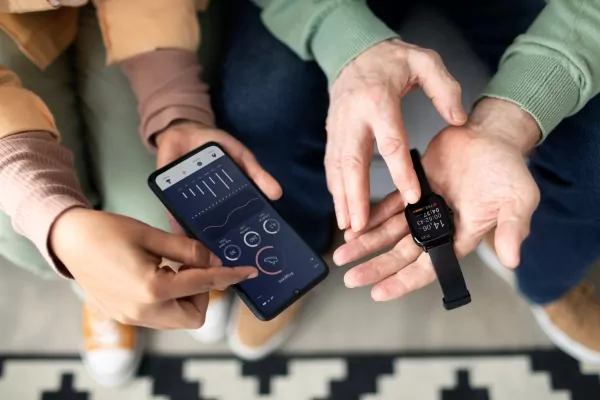
When 78-year-old Grace Johnson had a dizzy spell while gardening, she didn’t think much of it—until her smartwatch alerted her daughter in real time. Within 15 minutes, she had help on the way. What could have been a serious fall ended up being a minor scare. Welcome to 2025, where wearable health tech isn’t just a gadget, but a lifeline for seniors around the world.
The landscape of aging has dramatically shifted. No longer are seniors sidelined by limitations. Thanks to remarkable advances in wearable technology, older adults can now live more independently, confidently, and connectedly than ever before. In 2025, wearable health tech has moved far beyond counting steps. From detecting atrial fibrillation to monitoring hydration and fall detection, these tools are quietly revolutionizing how we age—and how we care.
Why Wearable Tech Matters More Than Ever for Seniors
With the global population aged 65+ expected to double by 2050, according to the World Health Organization, healthcare systems are under pressure. Seniors often face multiple chronic conditions—hypertension, diabetes, arthritis, or dementia—making daily monitoring essential. Traditional visits to the doctor simply aren’t enough. Wearables fill that gap by offering real-time health tracking, early warnings, and peace of mind for both seniors and their caregivers.
The Evolution of Wearable Tech in Senior Health
It wasn’t long ago that the only wearable many seniors used was a medical alert necklace. Fast forward to 2025, and the market is flourishing with AI-powered smartwatches, ECG rings, sensor-enabled socks, and even posture-correcting shirts. What was once niche is now mainstream, with tech giants like Apple and Samsung leading the charge, and health-focused startups introducing cutting-edge innovations tailored to senior needs.
2025’s Game-Changing Wearable Devices for Seniors
In today’s world, the best devices blend medical-grade monitoring with elegant design and ease of use. Here’s a look at some standout examples of how wearable health tech in 2025 is redefining senior care.
Smartwatches with Medical Precision
The Apple Watch Series 10 now includes real-time blood pressure monitoring, hydration alerts, sleep apnea detection, and ECG capabilities. This isn’t just fitness tracking—it’s medical-grade diagnostics on your wrist. It uses machine learning to detect irregular heart rhythms and can alert caregivers automatically. For Android users, the Samsung Galaxy Watch 7 also includes advanced health sensors like skin temperature monitoring and stress tracking.
Oura Ring Gen 4: Wellness in Disguise
The Oura Ring has evolved into a favorite among seniors who prefer discreet monitoring. Its compact, sleek design belies its powerful sensors that track sleep quality, blood oxygen levels, and readiness scores based on activity and recovery. What sets the 2025 version apart is its passive AFib detection and early respiratory distress alerts—critical features for seniors managing cardiovascular conditions.
Fall Detection and Mobility Monitoring
Falls remain the leading cause of injury among seniors. Thankfully, the latest generation of Vayyar Home and Lively Wearable 3 includes AI-enhanced fall detection, gait analysis, and automatic emergency calling. These systems analyze movement patterns in real time, allowing caregivers to intervene before a fall even occurs.
Biosensors in Clothing
Smart textiles are one of 2025’s most exciting innovations. Startups like Hexoskin have created shirts embedded with biosensors that track respiratory rate, heart rate variability, and physical activity—all without needing to press a button. For seniors who forget to wear a device or recharge it, smart clothing offers a seamless alternative.
Hearing Aids That Do More Than Hear
Today’s hearing aids are packed with cognitive support. Devices like the Widex Moment Sheer not only adapt to surrounding noise but also track brain activity and stress levels, offering early detection of cognitive decline. They sync with smartphones and alert family members if memory lapses or confusion patterns are detected over time.
Tech-Enabled Independence: Real Stories
Consider George, a 72-year-old retired pilot diagnosed with type 2 diabetes. Using a Dexcom G7 continuous glucose monitor, George receives real-time blood sugar updates directly on his smartwatch, allowing him to adjust his meals or insulin on the fly. Or Jane, a 68-year-old yoga enthusiast who uses the Whoop 5.0 band to monitor recovery and strain, helping her optimize her workouts while avoiding injuries.
These stories are more than anecdotes—they’re a glimpse into how wearables are empowering older adults to take charge of their health like never before.
Caregiver and Doctor Integration
Another 2025 milestone is seamless integration between seniors, their families, and healthcare providers. Through platforms like Withings Health Mate, data from wearables is securely shared with doctors in real time, allowing remote monitoring and early intervention. It’s also easier for adult children to track their parents’ vitals, location, and medication adherence through unified dashboards.
Addressing Privacy and Usability Concerns
With all this data flying around, it’s natural to worry about privacy. Companies have stepped up by adopting stricter GDPR-compliant protocols, two-factor authentication, and edge-computing that stores data locally rather than in the cloud. Devices are also designed with seniors in mind—think larger fonts, haptic feedback, longer battery life, and voice control, ensuring that technology supports rather than frustrates.
The Cost Barrier: Is Wearable Tech Accessible?
Affordability remains a concern, but progress is evident. Medicare and private insurers are beginning to cover certain devices under remote patient monitoring programs. Organizations like the AARP also offer discounts or subsidies for low-income seniors. Furthermore, as demand rises and technology advances, prices are gradually decreasing, making health tech more inclusive.
What the Future Holds
Looking ahead, wearable tech is expected to grow even smarter. We may soon see non-invasive blood glucose monitors, emotion-sensing smart glasses, and AI-driven apps that offer instant diagnosis based on wearable inputs. While no tech can replace human care, wearables are emerging as powerful companions in the journey of aging with dignity and independence.
Frequently Asked Questions
What is the best wearable health device for seniors in 2025?
It depends on the individual’s needs. For all-around health monitoring, the Apple Watch Series 10 is a standout. Those looking for discreet monitoring might prefer the Oura Ring Gen 4. If fall prevention is a priority, the Lively Wearable 3 or Vayyar Home system is ideal.
Are these devices covered by Medicare or insurance?
Some wearable health devices are now covered under Medicare’s Remote Patient Monitoring program or private insurance plans. It’s best to check with your provider or consult Medicare.gov for eligibility details.
Can seniors use these devices easily without tech experience?
Yes. Most modern wearables are designed for ease of use. Features like voice control, automatic syncing, and emergency buttons make them senior-friendly. Many also come with caregiver apps for family members to assist remotely.
Do wearable devices pose privacy risks?
There are potential risks, but most major manufacturers have invested in robust privacy features. Look for devices with end-to-end encryption, local data storage, and user-controlled data sharing options.
What if a senior forgets to wear their device?
Smart clothing and ambient sensors like Vayyar Home help fill this gap. Also, many wearables send reminders or alerts if not worn for extended periods.
Can wearable tech detect serious conditions early?
Yes. Devices like the Apple Watch and Oura Ring now include features to detect signs of atrial fibrillation, respiratory issues, and even cognitive decline—often before symptoms become apparent.
How often do these devices need to be charged?
Battery life varies. Smartwatches may need daily charging, while rings like Oura or bands like Whoop can last up to 5 days. Some smart clothing has built-in batteries that last a week or more.
Are there options for seniors with visual or hearing impairments?
Absolutely. Many devices now offer audio prompts, vibration alerts, or sync with hearing aids and screen readers. Accessibility features have become a top priority in 2025 designs.
Conclusion: Empowering the Golden Years with Technology
Aging used to be associated with decline, but wearable health technology in 2025 is turning that narrative on its head. Today’s seniors are not just surviving—they’re thriving, thanks in part to the silent guardians on their wrists, fingers, and even their shirts. These devices offer more than convenience; they offer freedom, autonomy, and reassurance.
If you’re a senior or have aging parents, now is the time to explore what wearable health tech can offer. Start by assessing needs: is fall detection most critical, or heart monitoring? Then consult with a doctor and consider a trial run with a recommended device. Don’t be afraid to embrace the technology—it’s designed to serve, not overwhelm.
In a world where health and independence go hand in hand, wearable technology stands as one of the most powerful allies for aging with grace, safety, and confidence.


